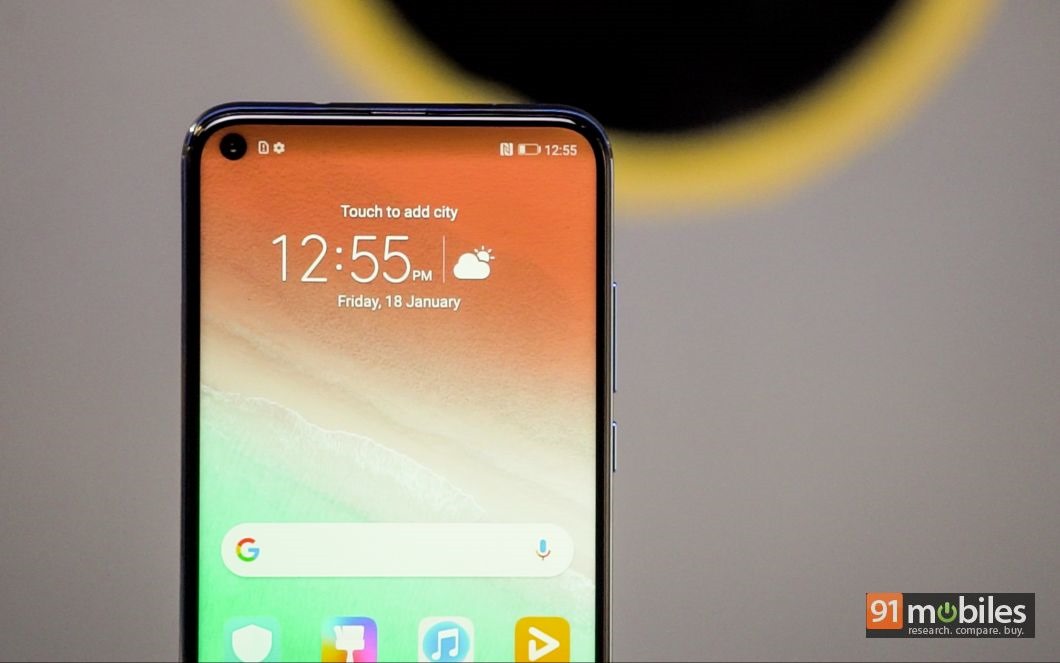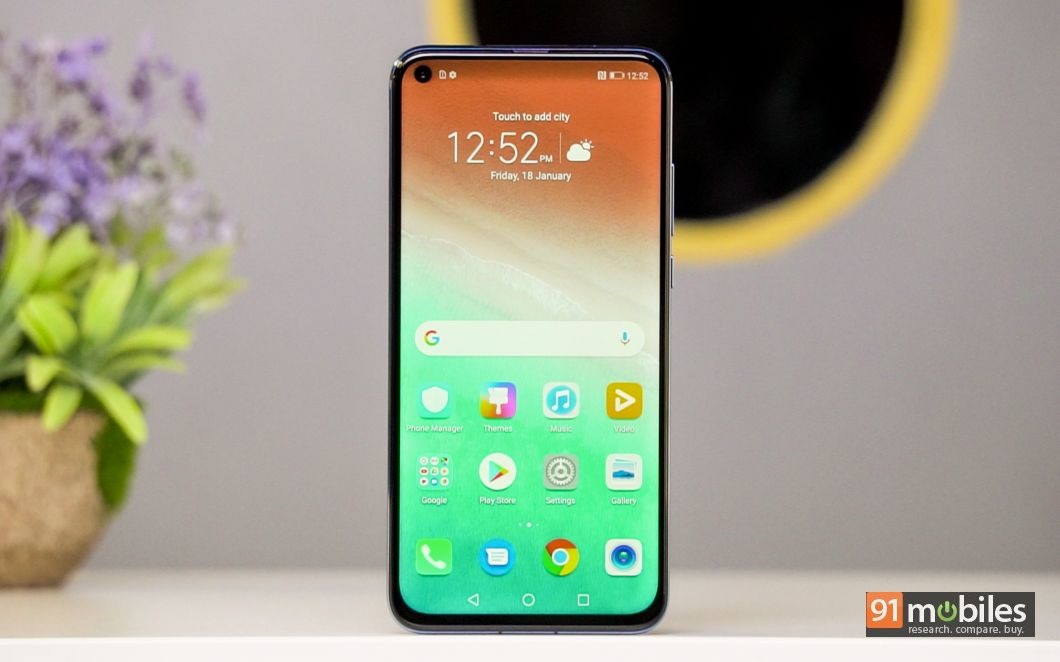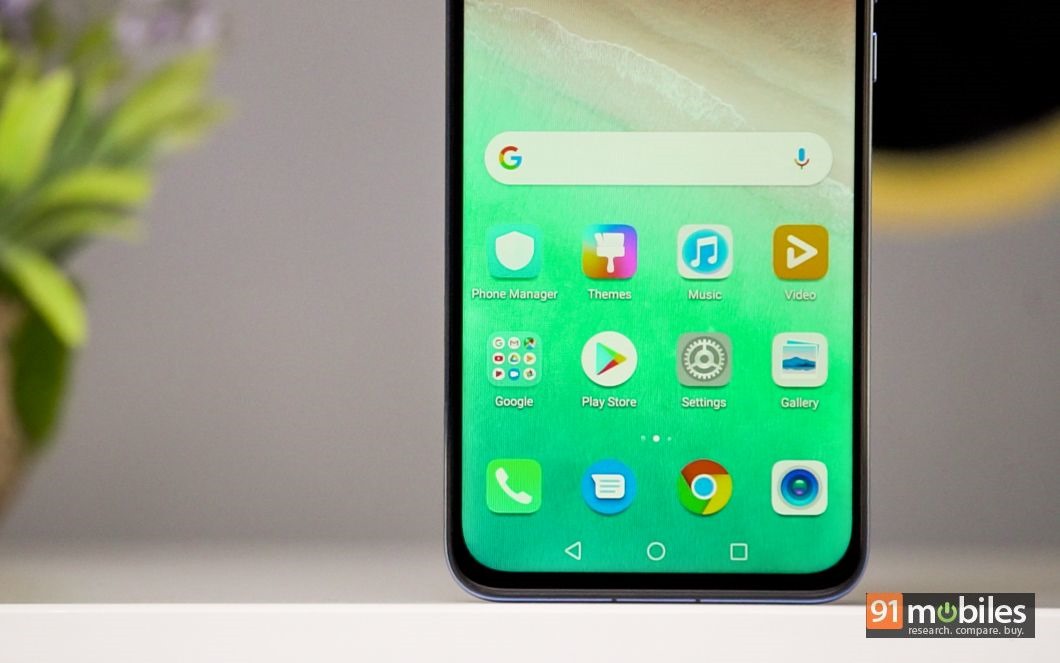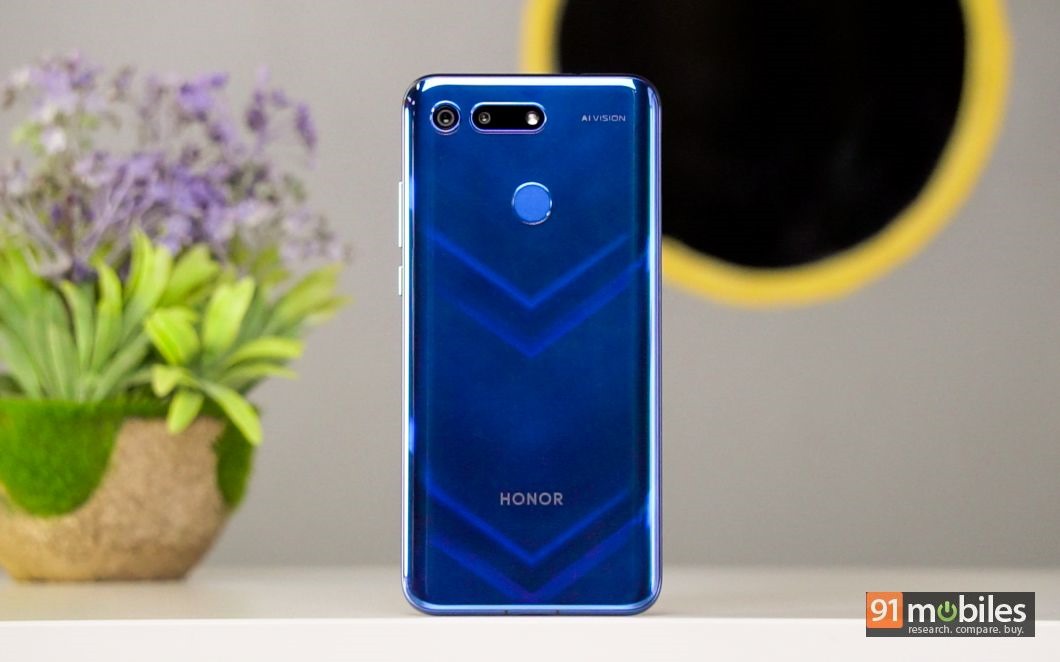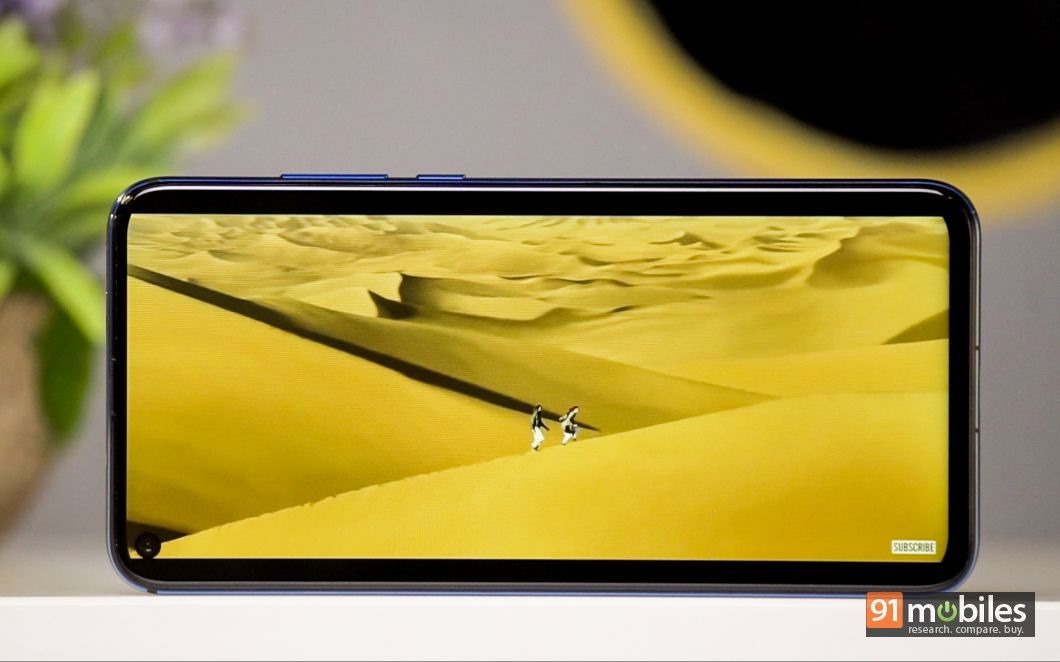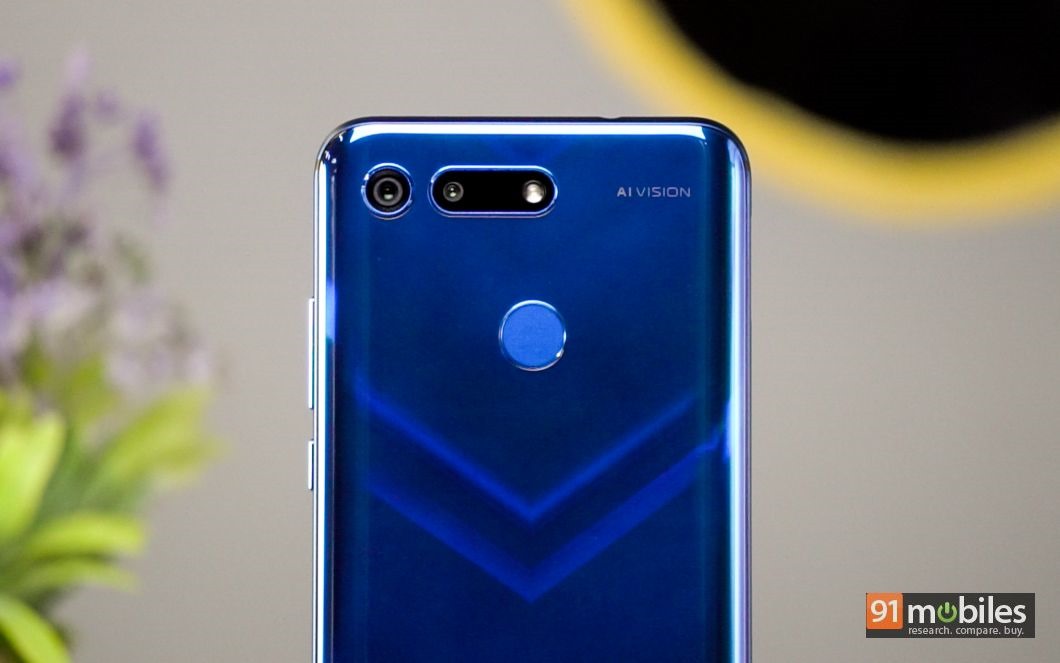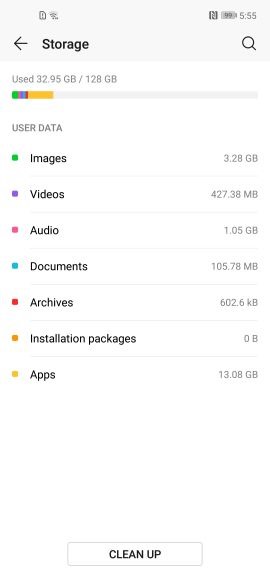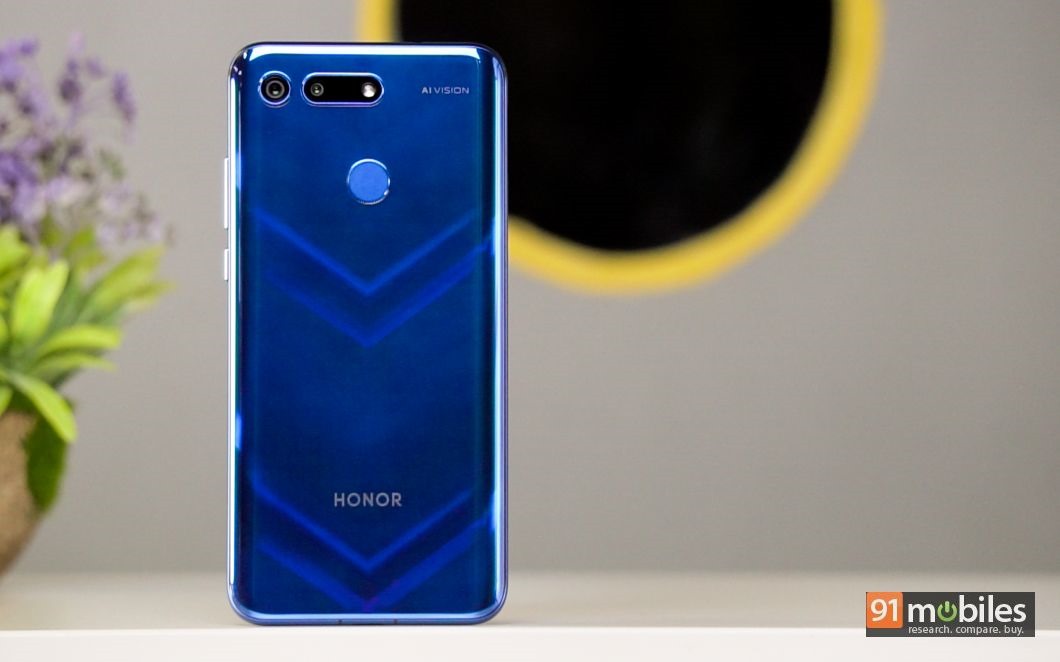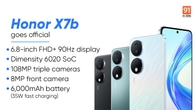When it comes to the mid-budget price band between Rs 10,000 and 20,000, Huawei’s sub-brand Honor has established itself as a strong contender in the Indian smartphone arena. However, in the premium segment above Rs 30k, the phonemaker hasn’t had much luck. That’s not to say that the company’s offerings are bad. Take last year’s View 10 (review) and Honor 10 (review) for instance. Both smartphones packed in powerful specs and were priced quite aggressively to take on the de facto recommendation in the affordable flagship category – the OnePlus 6 (OnePlus 5T in the case of the View 10). Yet, the devices weren’t able to make any dent in the popularity of OnePlus’ offerings. But in 2019, Honor seems to be shifting gears – and understandably so. Instead of simply packing a top-of-the-line spec sheet, the brand’s latest, the Honor View 20 (first impressions), boasts several firsts. It’s the first handset in India to feature a punch-hole display, and it’s also the first smartphone to flaunt a mind-boggling 48-megapixel sensor on the rear. So with a starting price tag of Rs 35,999, can the View 20 turn the affordable flagship category on its head? Well, that’s what I intend to find out in this review. Let’s dive right in.
Table of Contents
Specs at a glance
| Display | |
| Size | 6.4 Inch |
| Resolution | 1080 x 2310 pixels |
| Performance | |
| CPU | Dual core, 2.6 GHz + Dual core, 1.92 GHz, HiSilicon Kirin |
| RAM | 6 GB |
| Storage | |
| Internal memory | 128 GB |
| Battery | |
| Capacity | 4000 mAH, Li-Polymer, Non removable |
| Talktime | Up to 25 Hours (3G) |
| Camera | |
| Primary camera | 48 MP |
| Secondary camera | 25 MP |
| Connectivity | |
| Network support | Dual SIM 4G |
| Other options | Wi-Fi, Bluetooth 5.0, GPS |
| Others | |
| Battery Capacity | 4000 |
| Operating system | Android 9.0 Pie |
Design and display: an object of desire
Dimensions: 156.9 x 75.4 x 8.1 mm Weight: 180 grams |
Size: 6.4 Inch Resolution: 1080 x 2310 pixels Display Type: IPS LCD Pixel Density: 398 ppi |
Starting with the calling card of the Honor View 20 – the punch-hole on the display – it’s clear why this could be one of the biggest trends in smartphones in 2019. While the conventional display notch seems like a necessary evil when it comes to offering high screen-to-body ratios in phones, the punch-hole seems to be most logical solution for achieving full-screen fronts, at least till the time phonemakers come up with something else. The slider mechanism seen on some phones does have the ‘cool’ quotient, but it may be too far fetched to expect that on anything apart from premium flagship phones at the moment. So before proceeding any further, let’s figure out how it’s like to use a phone which has a hole to house the selfie shooter. To be honest, the punch-hole does catch your attention initially, but otherwise, using the phone isn’t weird in any manner. With a diameter of just 4.5mm, the hole resides on the top-left corner without obstructing anything, except for shifting the notification icons for network, Wi-Fi, etc. on the status bar slightly towards the right. If you look really closely however, the punch-hole area does result in screen bleeding, but it’s only noticeable from close quarters.
What this implementation helps in is achieving an extremely high screen-to-body ratio of 91.8 percent. The brand has cleverly placed the earpiece on top of the display panel, which ensures that you can hear callers on the other end clearly, unlike the ultrasonic tech utilised by some other phones devices that boast all-screen designs. There’s also a proximity sensor on top, and a thin chin at the bottom. Thanks to the CoF (Chip on Flex) technology, the Honor View 20’s display module is placed in a flexible component which flips towards the back instead of being on the front.
As far as other design elements are concerned, the View 20 doesn’t throw any surprises. In fact, it’s interesting to see the company retaining not only the 3.5mm headphone socket, but the IR blaster too. The buttons offer tactile feedback when pressed, which is a plus.
The Honor View 20 is even more impressive from the rear. With a glossy finish – being referred to as Aurora Nanotexture design – the phone undoubtedly offers a premium look. But what takes things to the next level is the unique V pattern which appears when the light falls on the rear at a certain angle, thanks to the nanolithography. This certainly looks super cool on my Sapphire Blue unit, and even more so on the Moroccan Red variant (which sadly, won’t be coming to India, for now). There’s also a Phantom Blue option and a classier Midnight Black edition. I’ve to applaud Honor here as the brand has been innovative with smartphone designs for quite some time now, and the unique V pattern still manages to mesmerise me as it did the first time I laid my eyes on the View 20.
The primary camera is placed in its own housing, with the secondary sensor and an LED flash encased in a separate module with both jutting out ever so slightly. There’s a fingerprint reader towards the centre and Honor’s branding further below. While we’re at that topic, the fingerprint sensor works flawlessly, but you may not need to use it often as the phone’s face unlock is quick and accurate too. Tipping the scales at 180g, the handset isn’t exactly lightweight, but thanks to the excellent weight distribution, it doesn’t feel heavy. The curved edges and rounded corners make the handling of the device easy, and so does the sleek frame measuring 8.1mm. Yet, there’s no denying that the View 20 is a slippery smartphone. Thankfully though, a TPU case is bundled along with the phone, but for some reason that also is prone to slippage if your hands are sweaty.
Coming back to the display, it measures 6.4-inches diagonally and bears a resolution of 1,080 x 2,340 pixels with an aspect ratio of 19.5:9. It’s appreciable that the brand has pre-pasted a screen guard since the phone has such an unconventional design. The IPS LCD panel may not be as punchy as OLED screens, but offers impressive colours with sharp text. And in case you feel the colour reproduction looks artificial, then you can change it to normal from the default setting of vivid. Viewing angles are pretty good as well, and so are the brightness levels. We didn’t struggle while using the screen outdoors. Sadly though, many apps aren’t compatible with this aspect ratio, which means watching videos on Netflix means having a black bar in the area where the punch-hole camera is present. YouTube however, doesn’t suffer from this issue and scales up the video so that you get the maximum real estate, and as mentioned earlier, the punch-hole piercing isn’t distracting as such. Though, if you’d like, you can still disable it from the display settings, although that would defeat the purpose of having a large screen at your disposal. It’s also worth mentioning that the display on the View 20 is HDR-capable, but it only plays compatible videos in this mode on YouTube, and not on Netflix – which is perhaps why the phone’s name isn’t listed on the streaming service’s list of supported devices for HDR playback.
Cameras: the 48-megapixel wonder
Primary camera: 48 MP Flash: LED Flash Secondary camera: 25 MP |
Now coming to another highlight of the View 20… the 48MP camera on its back. For the past couple of years, it seemed that the megapixel wars were over, and we were seeing other innovations in terms of larger sensors, wider apertures, and of course, multiple shooters. So what does the 48MP shooter enable that we couldn’t have achieved otherwise? Well, I’d urge you to read this explainer article. Zooming in (pun intended) on the sensor being used on the phone: it’s a Sony IMX 586 unit that measures 1/2-inch, has a pixel size of 0.8µm and an aperture opening of f/1.8. Interestingly, it’s paired with a TOF sensor (for measuring the distance between the shooter and the subject), which helps in accurate depth mapping, helping in portrait shots as well as 3D gaming.
In terms of the camera app, the options on offer aren’t much different from those available on other Honor or Huawei smartphones. In the vertical orientation, the viewfinder has a large circular shooting button at the bottom sandwiched between the preview gallery and toggle for the selfie camera. Above that, you’ll find a row of various modes, including portrait, night, video, and more, which give access to other modes for which I’ve always admired the phones from the brand’s stables – Pro, Light painting, and aperture among others. Up top, you’ll find HiVision – Huawei’s take on Google Lens (although along with finding objects from e-commerce sites or recognising things, it can also let you scan QR codes and barcodes), the ability to switch on the flash and moving picture, enable or disable the AI mode and the settings menu. Worth noting that by default, the smartphone shoots in 12-megapixel, and you’ll need to manually change to 48MP resolution, though I’d suggest that you shouldn’t use this option all the time.
Why’s that? Well, as explained in this piece, 48MP snappers do seem to offer more resolution, but as smartphone camera sensors are small in size, they aren’t able to offer much detail in low-light scenarios. With the use of pixel binning and Quad Bayer colour filter however, the sensitivity is raised to 1.6µm and the resolution is downgraded to 12MP resolution, which offers better sharpness levels. In fact, you can’t make use of features such as zoom and burst mode while clicking pictures in 48-megapixel. And while 48-meg pics offer more details, images tend to be softer in comparison. But of course, I’ll let the pictures do the talking to explain the same. Embedded below are two different scenes (one in daylight, and the other in a dim environment) in the 12MP and 48MP resolutions, respectively.






So you can use different resolutions as per the need… but what about the quality? In short, super sharp and vibrant. The View 20 does complete justice to the scene by offering ample details and reproducing pleasing colours. The details aren’t lost even when viewing images at 100 percent crop levels. While AI has been a buzzword for improving camera performance, similar to Huawei’s Mate 20 Pro (review), Honor exploits its full potential by recognising different objects and scenes to offer the optimum output. I wouldn’t say it’s perfect, but it does come close indeed. Shots taken in poor lighting keep noise to a minimum, and you can also user the night mode which stacks up multiple images with long exposure to offer sharper results. The best part about this mode is that you don’t require a tripod. The smartphone also features a 48MP AI Ultra Clarity mode, which promises to offer better clarity in sufficient lighting conditions, but sadly it’s not available on the review unit I’ve been using (I’ll update you about the quality of shots in this mode as and when this feature becomes available). I’ve barely scratched the surface here, but I’ve to say that the View 20 is one of the better shooters I’ve come across recently, so much so that I didn’t miss using the Google Pixel 3 XL (review) as my daily driver, which is known for its competent camera performance. With that thought, I’ll leave you with some camera samples captured by the Honor View 20.
If you are wondering whether the quality of selfies get affected in any way because of the front camera being placed inside a cavity, then fret not. The 25-meg selfie f/2.0 shooter does a fine job in capturing details and colours. Dim light however, is another matter altogether as images turn out quite grainy. The software-based portrait mode works quite well, though the edge detection isn’t perfect. Then there’s AR Lens, offering 3D Qmoji (similar to Animoji) and the ability to change the background for fun effects. Remember the Time of Flight sensor? Well, it’s available as an option in the portrait mode, allowing you to make the subject slimmer (or fatter, if you prefer) with a simple slider.
The Honor View 20 continues to impress in the video department as well. The phone can capture in 4K at 30fps, while full HD videos can be shot at 60fps. Slow-mo clips can be captured in HD resolution at 960fps. While there’s no OIS, the phone does come with AIS (AI image stabilisation), which is able to ensure smoother footage. What I really liked is the aperture mode or AI background separation modes in videos, which helps in capturing a lot of creative footage.
Hardware and software: achieves warp speed
CPU: Dual core, 2.6 GHz + Dual core, 1.92 GHz, HiSilicon Kirin GPU: Mali-G76 MP10 RAM: 6 GB Memory: 128 GB SIM Slots: Dual SIM , GSM+GSM |
There’s no doubt that Huawei’s Kirin 980 is one of the most powerful SoCs around, and the same can be found inside the Honor View 20. With the 7nm octa-core chipset, the handset delivers flawless performance, irrespective of whatever you might be doing. Couple that with 6-gigs of RAM, and phone literally flies through anything thrown at it. During the course of two weeks of using the View 20, there wasn’t even a single instance where it showed any traces of lag.
The experience continues in the gaming department as well. Killing enemies in PUBG or zombies in Unkilled 2 is an enjoyable affair, thanks to the graphics prowess of the Mali-G72 GPU. Of course, the brand’s GPU Turbo 2.0 technology also plays a crucial role in providing this experience. And thanks to the liquid cooling technology that uses an S-shaped heat pipe under the hood, the handset is able to keep its cool even after playing intensive games for more than 30 minutes. You could also make use of the ToF sensor to play games such as Fancy Darts, which lets you get Kinect-like abilities by throwing darts on a board.
The Honor View 20 ships with 128GB of built-in memory, out of which more than 100GB is available to the end user. Sadly however, you won’t be able to expand the storage further as the device lacks an expansion slot. So if you want more storage, I’d suggest opting for the 256GB RAM model which comes with 8GB RAM.
Honor has been shipping smartphones with its parent brand’s EMUI, but now it seems to be charting its own path. We first came across Magic UI 2.0 platform on the Honor Magic 2, and the same can be seen on the View 20. Based on Android 9.0 Pie, it’s hard to see how exactly the custom skin differs from Emotion UI, but it could be just a sign of things to come from Honor. The interface is quite polished, and you’d appreciate some preloaded apps like Phone Manager and Health. There’s bloatware in the form of Camera360 and Vigo Video too, though you can uninstall these. One of the features that deserves a shout-out is Wireless Projection. Mind you, it’s not just a simple option for mirroring your phone’s screen onto a large-screen television. It can give you a full-fledged desktop mode (similar to the DeX mode available with the Samsung Galaxy Note9), and that too sans any wires. In this mode, the handset works as a trackpad to control the onscreen pointer, and can also be used to input text via the keyboard. Using this mode, you can browse the web on the large screen, watch videos, and do lots more. It’s certainly a powerful and interesting option, which goes on to show just how capable the Kirin 980 silicon is. You can also enable gestures to exploit the full-screen and using them doesn’t require a learning curve as such.
While I loved watching videos and playing games on the immersive display of the Honor View 20, I can’t say the same for the audio experience it delivers. It’s not that the single-firing speaker at the bottom doesn’t produce good output, but the fact that it easily gets muffled when the phone held in the landscape orientation results in a muted output.
Battery: packs in endurance
Capacity: 4000 mAH, Li-Polymer, Non removable Talktime: Up to 25 Hours (3G) Standby Time: |
As you can make out, the Honor View 20 has been impressive in most aspects so far, and the battery department is no different. With a 4,000mAh pack, the device is able to offer long battery life. On an average, I got anywhere between five to six hours of screen-on time with my usage comprising staying connected to the internet via Wi-Fi / 4G at all times, streaming videos off YouTube or Netflix, playing games and even using the phone as a Wi-Fi hotspot intermittently.
While the phone lacks fancy features such as wireless charging, it does come bundled with a 40W Super Charger. Charging from 10 to 100 took roughly 80 minutes, which is noteworthy considering the capacious battery it packs in.
Verdict
As I mentioned at the beginning of the review, it’s evident that with the View 20, Honor is aiming to blaze a trail for smartphone trends that are expected to go big in 2019, instead of just being a follower. And if my experience with the device is anything to go by, the brand has been able to achieve that and then some more. The smartphone offers next-gen technologies without skimping on the basics of good build quality, smooth user experience and reliable battery life.
Of course, the age-old rivalry between Honor and OnePlus continues with the latest smartphone as well, but this time I’m rooting for the former. Not that the OnePlus 6T (review) is a bad phone, but the View 20 simply comes across as a better proposition – and that too, at a similar asking price of Rs 37,999 for the base model. The higher-end version of the View 20 will set you back by Rs 45,999, which is a different territory altogether, where the device doesn’t seem to be as much of a VFM proposition.
All said and done, the Honor View 20 is a solid offering and the best one yet to come out of the brand’s stables. In fact, I believe that the handset deserves a near-perfect score… if only it was priced slightly lower to make it an even more enticing proposition.
Editor’s rating: 4 / 5
Pros
- The punch-hole display and V reflection is stunning
- The 48-megapixel rear shooter isn’t a gimmick
- Great selfie shooter
- Powerful innards
- Long-lasting battery life
- Interesting-and-useful features such as Wireless Projection
Cons
- No waterproofing
- Storage can’t be expanded further
- The secondary camera on the back isn’t as versatile as phones with a telephoto or wide-angle shooters
Photos by Raj Rout

